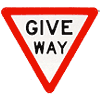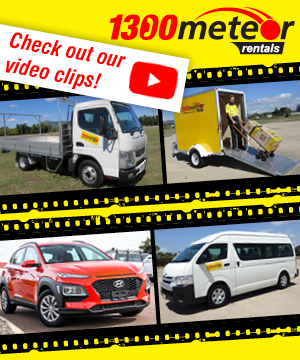Welcome
Your visit to Queensland will be more enjoyable if you are aware of some basic road rules and conditions. It will mean a safer and happier visit.
A more comprehensive guide appears in the Queensland Transport publication "Your keys to driving in Queensland" which can be downloaded (free) from: https://publications.qld.gov.au/dataset/your-keys-to-driving-in-queensland.
Your Drivers Licence
When enjoying a temporary stay in Queensland, you may drive only if you hold a current valid driving licence issued under any law of the State or Territory of Australia, or the country in which you usually reside, and the licence covers the class of vehicle being driven.
You must carry your licence at all times when driving and, if it is not in English, also carry your International Permit or an official translation of that licence.
Anybody who allows another person to drive knowing the person does not hold a driver's licence is committing an offence.
What Can You Drive
| Vehicle Description | Minimum Queensland Drivers Licence Requirement |
| Class | Description |
cars minibuses up to 12 seat capacity light commercials: 1 tonne utes & delivery vans 4WD utes, wagons & troopys trucks up to 2 tonne nominal payload | C (or better) | 'Car' Motor vehicles up to 4.5 tonne GVM and a maximum seating capacity of 12 (including driver) |
buses over 12 seat capacity
(not exceeding 8 tonne GVM)
trucks with a
nominal payload
between 3 & 4
tonne | LR (or better) | 'Light Rigid'
Motor vehicles up to 8.0 tonne GVM and/or more than 12 seat capacity (no axle limit) |
trucks with a
nominal payload
capacity between
5 and 9 tonne | MR (or better) | More than 8.0 tonne GVM (2 axle only) |
GVM
'Gross Vehicle Mass' ie the maximum permitted all up weight of the vehicle when fully loaded (including passengers and fuel). Set by the vehicle manufacturer and stamped on to the vehicles' compliance plate.
Nominal Payload
The difference between the vehicles' GVM and it's tare (unloaded) weight. Trucks in particular are normally described by their nominal payload capacity, and not GVM e.g. a '2 tonner' will nominally carry 2 tonne, and has a GVM of approximately 4.5 tonne.
Further information can be obtained by contacting Queensland Department of Transport and Main Roads on 132380 or visit www.tmr.qld.gov.au and click on the Licencing option. The information provided here represents a very brief summary for use as a guide only and does not include all licence classes or conditions.
Driver's Log Books
Who requires a log book
All drivers of commercial buses with more than 12 seats, or heavy vehicles with a GVM * over 12 tonne are required to comply with the national driving hours regulation, but drivers who are on journeys wholly within 200km of their base are not required to use a log book. Records are still required to be made by employers for journeys within 200km of the Driver Base. Drivers must give the duplicates of their Daily Sheets to their employers within 21 days.
How to obtain a log book
The National Log Book is available for a small fee from Queensland Transport Customer Service Centres and authorised agencies. For the location of your nearest Queensland Transport Customer Service Centre, please call 132380. Drivers must apply in person and present a current driver's licence.
Definitions
GVM: 'Gross Vehicle Mass' ie. the total weight of the vehicle when loaded, including fuel and passengers.
Heavy vehicle: a heavy truck; or commercial bus; or a bus with a GVM of more than 12 tonne.
Heavy truck: a motor vehicle (other than a motorhome or bus), with a GVM of more than 12 tonne.
Bus: a motor vehicle built mainly to carry people which seats more than 12 adults (including the driver).
Commercial bus: a bus used for hire or reward; or in the course of carrying on a business(eg. a courtesy bus or a school owned by a private school); or by a community organisation.
Further information on the National Fatigue Management Hours Regulation and the National Log Book can be obtained by visitng the National Heavy Vehicle Regulator. The information provided here represents an outline only and should not be used as a reference to any point of law.
Seatbelts
All vehicle occupants must wear properly adjusted and securely fastened seat belts or child restraints, where fitted.
If you are a driver, you must ensure all children are properly restrained in approved child restraints or seat belts.
Important Road Rules
- You must drive on the left except on a one-way road.
- You must give way to traffic on your right at crossroad intersections not controlled by signs or traffic lights. This rule also applies if traffic lights at an intersection are continuously flashing yellow or are not working.
- If you are on a road which ends at another uncontrolled intersection with a continuing road, you must give way to all other traffic.
- Even if you have a green traffic light, it is an offence to drive into an intersection if the road ahead is blocked by traffic.
- You must always give way to pedestrians, not just at marked pedestrian crossings.
- When passing or overtaking a cyclist you must provide a minimum safe distance of at least 1 metre in a 60km/h or less speed zone and 1.5 metres where the speed limit is in excess of 60km/h.
- You must always turn left into a roundabout to travel clockwise and give way to traffic already in the roundabout.
- You must clearly signal your intention at least 30 metres prior to turning right or left or prior to stopping.
- You can only make a U-turn at intersections controlled by traffic lights when a sign specifically allows this.
Speed Limits
Unless otherwise indicated by official traffic signs, the maximum permitted speed limits are as follows:
| Within Built up Area* | Local streets** - 50km/hr
Other - 60km/hr |
| Outside Built up Areas | 100km/hr |
*A Built up Area is an area with a system of street lighting.
**A local street is one that is mainly used to provide direct access to homes and private properties.
If you don't see a speed limit sign in a built up area, don't drive faster than 50km/hr.
Road Markings & Overtaking
You may cross a single centre line to complete a safe overtaking except when approaching the crest of a hill or within 30 metres of an intersection or a level crossing
Where the road marking is a double centre line comprising two continuous lines or a continuous line on the left of a broken or dotted line, you cannot cross the lines from the continuous side at any time. This means no right hand turns, U-turns, overtaking or turning into private propertyYou must drive in the direction indicated by roadway directional arrow.
Parking
Parallel parking applies unless another method of parking is shown by an official sign. You cannot reverse out of a parking area established across the centre of a road and remember, where angle parking is permitted, your vehicle should be at a 45 degree angle to the kerb unless official signs state otherwise.
Parking is forbidden on footpaths, at bus stops and close to official post boxes, intersections and railway level crossings.
It is also illegal to park against the flow of traffic and on any hill or curve where your parked vehicle could obstruct the clear view of approaching drivers.
When looking for a parking space in a busy area, be sure to read the official traffic signs, especially where there are few, if any, vehicles parked close to where you intend to park. The area may be a prohibited parking area.
Clearways are reserved for through traffic. You cannot park or stop in clearways during the times indicated by the signs.
Drinking & Driving
Queensland has a .05 percent blood alcohol limit for drivers with an open licence. Two or three standard drinks in one hour could put you over the limit.
A zero blood alcohol content applies for provisional licence holders under 25 and all heavy vehicle and licensed-vehicle drivers.
If you refuse to supply a breath specimen to a Police Officer, you will be charged with failure to supply and may be arrested and be required to blow into a breathalyser or undergo a blood or urine test.
Important Trafic Signs
 | STOPYou must stop your vehicle completely as close as possible to the associated stop line on the road and give way to all vehicles including oncoming traffic. If there is no stop line painted on the road, stop where you have a clear view of all approaching traffic. |
 | GIVE WAYYou must give way to all vehicles including oncoming traffic. You should slow down when nearing this sign because you may have to stop to avoid an accident. |
Freeway Driving
- Plan your route before you enter a freeway and know your exit. Please observe these basic rules:
- Do not stop except in an emergency or in case of breakdown. If you must stop, use the emergency lane or bay provided;
- Do not travel in the emergency lane except when stopping;
- Do not make U-turns and do not use reverse;
- Signal before changing lanes and allow a greater warning time to compensate for higher speeds than usual;
- Be ready and in the correct lane when approaching your exit ramp. If you miss your exit you cannot turn back and you must continue ahead to the next exit.

Road & Weather Conditions
Because of Queensland's vast size, road and weather conditions can vary substantially. Roads, particularly in rural areas, can narrow quickly and can have dangerous edges. Vehicles travelling in opposite directions must share the available bitumen by slowing down and placing the left wheel of their vehicle on the road shoulder.
Enjoy your sightseeing but stop occasionally to allow vehicles behind you to pass.
Remember gravel road surfaces are deceptive and should be approached with extreme caution.
Queensland's weather can vary from extreme dryness to heavy rain and cause any hazard from clouds of dust which reduce visibility or flash floods which can cover even major roads with deep water.
Wherever possible, avoid driving into the rising or setting sun.
You should take extra supplies of food, water and petrol and tell local police of your intended route if you drive in the outback.

Animals
Queensland's animal population ranges from native species to farmyard animals and family pets and, especially in country areas, animals including horses, cattle, sheep, koalas and kangaroos find their way onto roads. They can be a road safety risk for an unwary driver.
Drive with caution - especially at night - and approach animals slowly!
Fatigue
Queensland is vast and long distance road travel could be an essential part of your visit, so remember the effects of driver fatigue caused by long hours behind the wheel. Unless you are used to driving long distances, please consider other means of travel.
If you do choose to drive, make sure you begin your trip fresh, rest at least every two hours and share the driving if possible.
Disclaimer: The information contained on this site is general and is not intended to be advice on any matter. Nothing contained herein is intended to constitute an offer, inducement, promise or contract of any kind. Please refer to the terms and conditions of this website for further information. The information provided here represents a very brief summary for use as a GUIDE ONLY, and should not be used as a reference to any point of law. Reference must be made to the Transport Operations (Road Use Management - Fatigue Management) Regulation 1998 for a precise interpretation of legal obligations and if necessary consultation with your legal practitioner.


)
)
)
)
)
)
)
)
)








